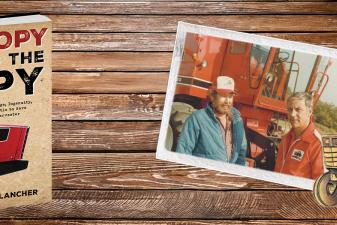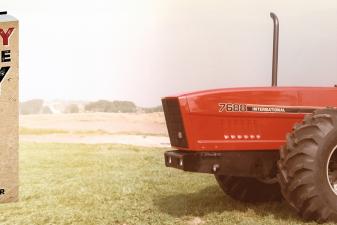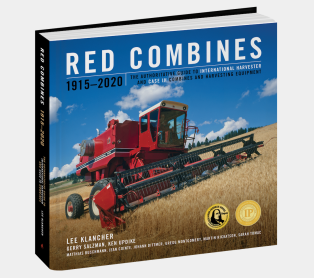The Cotton Club: John Deere Spies on International Harvester

The following is an excerpt from Snoopy and the Spy by Lee Klancher. The stakes had never been higher than they were on the farm fields of the late 1970s and early 1980s. The era marked one of the hardest economic environments of the twentieth century, and two of the world’s toughest competitors were locked in a high-horsepower arms race to create the world’s best piece of agricultural equipment. In this excerpt, read about how John Deere got a sneak peek at an IH prototype combine.
Harvester was battling to create a new machine for the cotton farmers of the world. Cotton is one of the trickiest crops to harvest; removing the fibers is so difficult that it was done by hand long after machines were developed to harvest simpler crops, such as corn, beans, and grain.
The red machines had been leaders in the cotton harvester market since Harvester introduced the first effective cotton harvester in the 1940s. That machine took two decades to develop and, for a time, was the dominant machine in the industry.
Deere had entered the market in 1950. By the time the two makers were at it hammer and tong in the 1970s, Deere had whittled away its red competitor’s lead, and the two were battling for the lead spot in this niche of the agricultural industry.
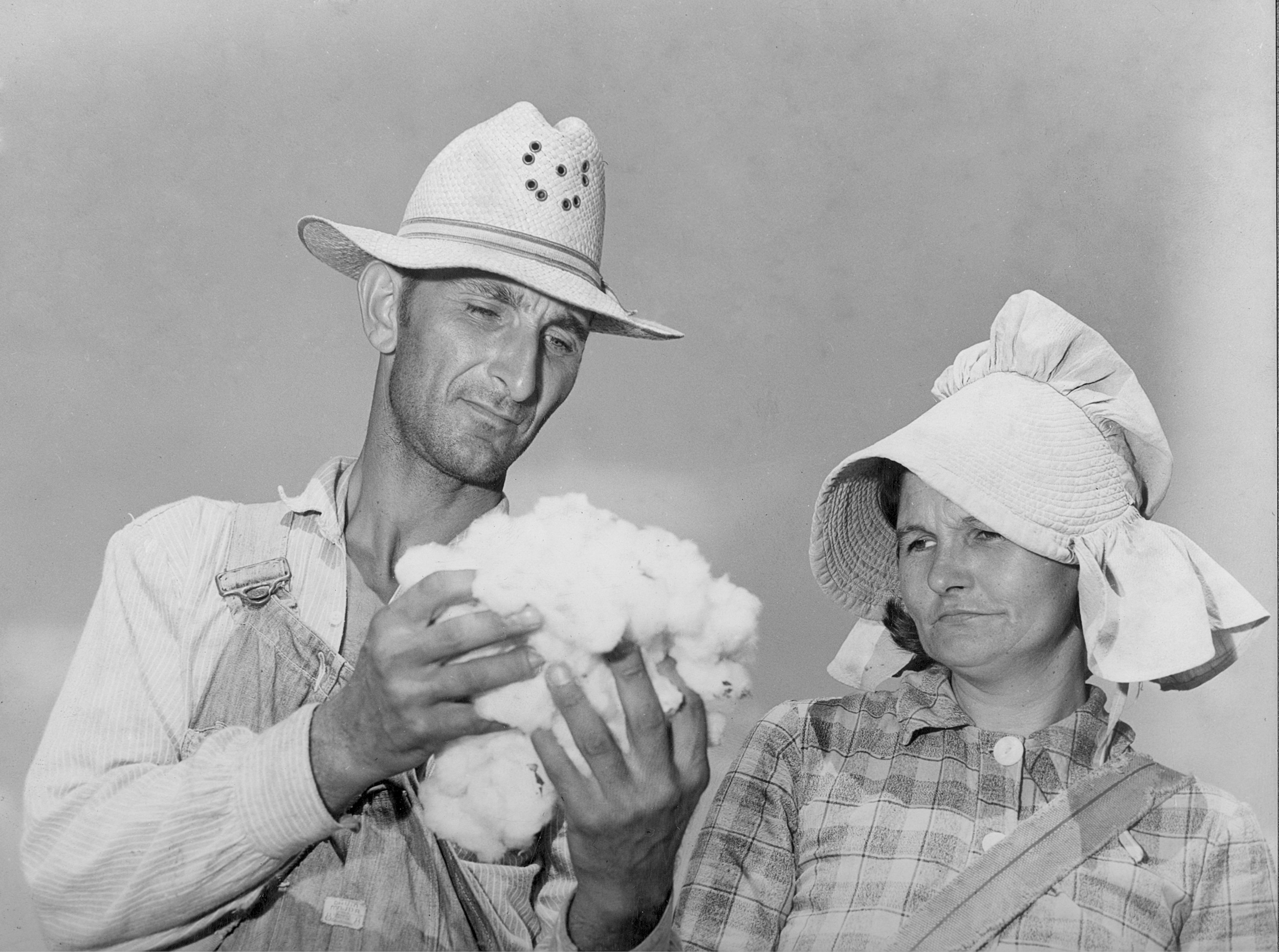
In 1979, both manufacturers were putting the finishing touches on new models that would be introduced in 1980. The competition was fierce, and any whisper about what was going on behind a competitor’s door was welcome information.
John Deere territory manager Dale Johnson was knee-deep in the battle in 1979. He was based in Yuma, Arizona, when he received a tip about a competitor’s machine out in the field—in Arizona’s Box Canyon.
Arizona is fertile territory for machine development and testing, as the temperate weather makes for ideal ground conditions even when the middle of the country is buried in snow. Through much of the twentieth century, new equipment was moved as quietly as possible and tested as discreetly as possible in that part of the country. To this day, the major manufacturers have proving grounds in the region.
Since the earliest manufacturers began testing new equipment there, skullduggery was afoot, with engineers and others sneaking around during the dead of night to peek under tarps, crawl under machines, take metallurgy samples, and even partially disassemble equipment.
When Johnson picked up his phone that day, he received a tip from a colleague at the Deere factory in Des Moines, Iowa, that builds cotton pickers. The Deere plant was about to release a new four-row cotton picker, the 9940, and they had a tip to pass on.
“Rumor has it that there is an International four-row experimental cotton picker working around out there some place in southwest Arizona or southeast California,” the voice on the phone said. “Do you suppose you could track it down?” Johnson had a hunch he could.
“I knew who to call, my John Deere dealer in Parker, Arizona, Bill West. Bill was a grand old gentleman and knew everybody in the countryside.”

Parker was right on the California border and, as Johnson predicted, West had a hunch how to get a look at the competition’s new machine.
“You know, I think I got an idea,” West said. “If they’re going to run something, there’s a real loyal IH guy and he’s in the proverbial Box Canyon. There’s only one way in and one way out. We’ve gone hunting there.”
The canyon was just across the California border, a few hours north of Yuma. Johnson didn’t waste any time. “I drove up there to Parker.” He was joined by Bill Weber, a salesman for West, and the pair loaded into an ordinary pickup truck. “We threw a couple of shotguns in there and I had my camera.”
When they arrived in Box Canyon, which was near the Colorado River, they spotted a big red machine picking cotton in the distance. They decided to get closer to get a good look at it, which was when the cavalry arrived.
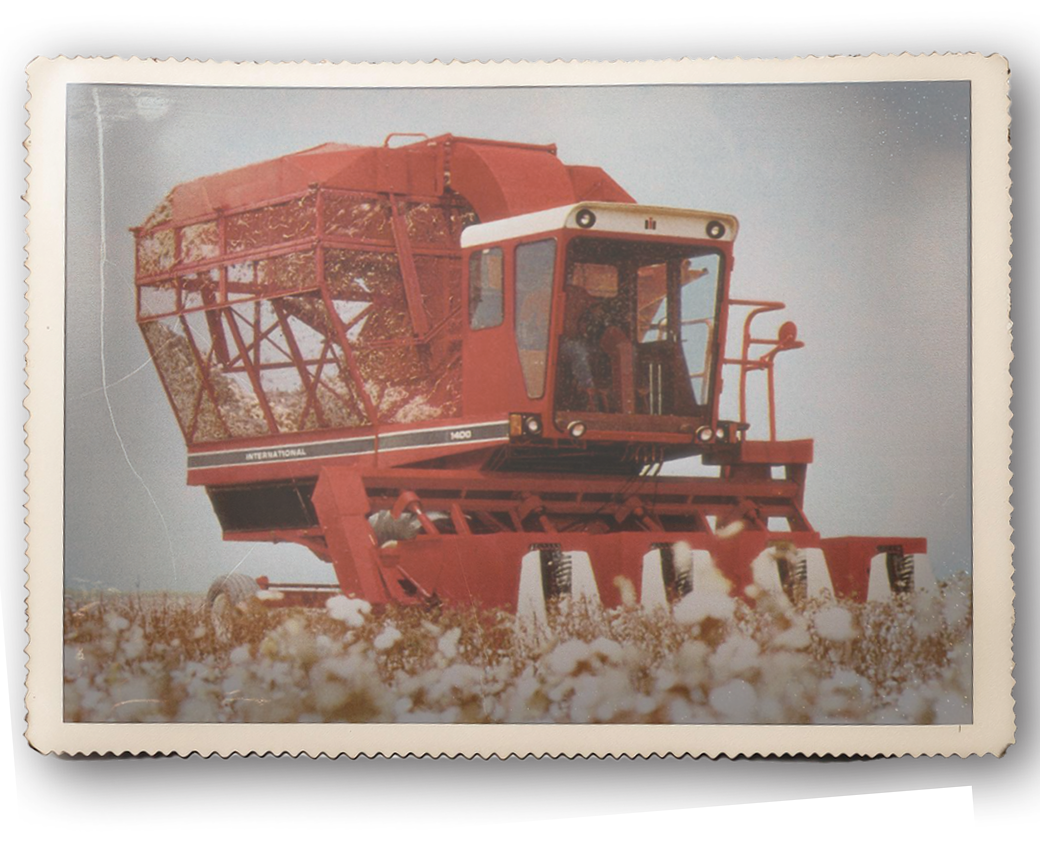
“The next thing we saw was two pickups come roaring down our way. Dust was flying!” Johnson said. The two trucks skidded to a stop, blocking Weber and Johnson’s vehicle in the front and rear.
“What are you guys doing here?” the Harvester man asked.
“Well, we’re scouting out hunting for bird hunting this fall,” Bill said.
“What are you doing with that camera?”
“Oh, we like to take pictures too.”
“Bullshit! You guys are from John Deere, aren’t you? Get the hell out of here!”
The two men hightailed it out of there and went back to the dealership to consult with West. The mission wasn’t over, as West had another idea. He owned a four-wheel-drive dune buggy with a big engine that he thought was just right for the job.
“You know what,” he said to his salesman Bill Weber, “Why don’t you take Dale out in the dune buggy, and you can just go through the desert and get on top of that canyon, and I’ll bet you can find a way to slither down the canyon wall and get over there.”
So, Weber and Johnson beat their way off-road to the top of the canyon.
“We found kind of a drainage, a crevice in the canyon wall, and so we slithered down that canyon wall and got to the bottom to the edge of the cotton field,” Johnson said.
“We used some of our old army skills and we low crawled between the cotton rows and toward the cotton picker and it happened to be just right at noon time and so they had stopped the cotton picker under a clump of cottonwood trees along the irrigation canal.”
The Harvester test crew was sitting under trees having lunch, and Johnson was able to sneak over and photograph the experimental cotton picker. He climbed on top of the machine and inside it as well.
“We low crawled back out of the cotton rows and climbed back up out of the canyon, and it was a lot easier going down than it was going up, I remember that.”

On the rim, they discovered a deer or elk skeleton.
“We propped up the head and I took some pictures of that too, and so we called it the skull espionage,” Johnson said.
The photos were sent to Deere headquarters, and word got back that they were passed around to a large number of employees there, eventually finding their way to the CEO’s office.
Deere introduced the 9940 four-row cotton picker, and International put out its Model 1400 four-row picker. Both were released for the 1980 season—the two companies were aggressively attacking the cotton picker market.
“That was pretty tough competition back in those days, and so we were both trying to gain a foothold. We had probably sixty percent market share on cotton pickers, on the two-row cotton picker, and so they had the rest. There were only two cotton picker manufacturers, Deere and IH. They had probably about forty percent and we were wanting to keep growing in that market share,” Johnson said. “It was pretty intense.”


